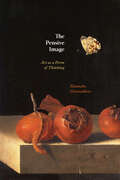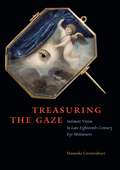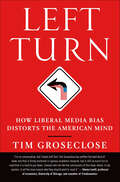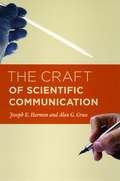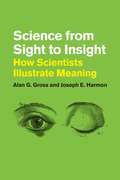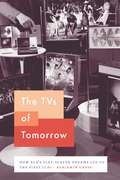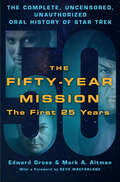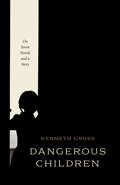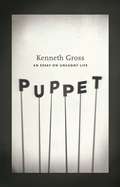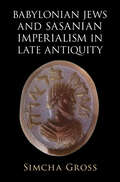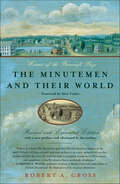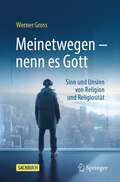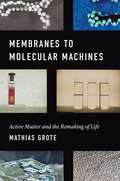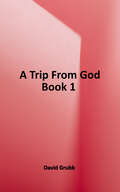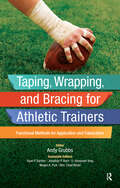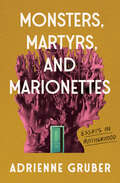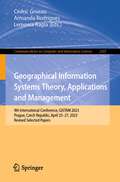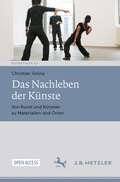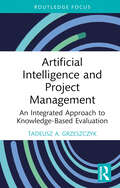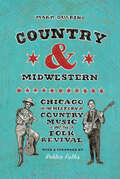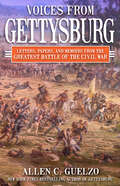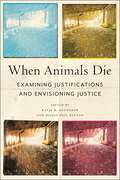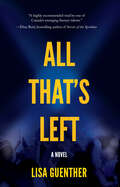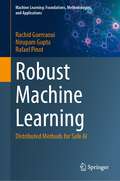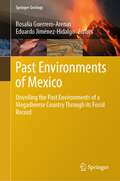- Table View
- List View
The Pensive Image: Art as a Form of Thinking
by Hanneke GrootenboerGrootenboer considers painting as a form of thinking in itself, rather than a subject of philosophical and interpretive thought. While the philosophical dimension of painting has long been discussed, a clear case for painting as a form of visual thinking has yet to be made. Traditionally, vanitas still life paintings are considered to raise ontological issues while landscapes direct the mind toward introspection. Grootenboer moves beyond these considerations to focus on what remains unspoken in painting, the implicit and inexpressible that manifests in a quality she calls pensiveness. Different from self-aware or actively desiring images, pensive images are speculative, pointing beyond interpretation. An alternative pictorial category, pensive images stir us away from interpretation and toward a state of suspension where thinking through and with the image can start. In fluid prose, Grootenboer explores various modalities of visual thinking— as the location where thought should be found, as a refuge enabling reflection, and as an encounter that provokes thought. Through these considerations, she demonstrates that artworks serve as models for thought as much as they act as instruments through which thinking can take place. Starting from the premise that painting is itself a type of thinking, The Pensive Image argues that art is capable of forming thoughts and shaping concepts in visual terms.
Treasuring the Gaze: Intimate Vision in Late Eighteenth-Century Eye Miniatures
by Hanneke GrootenboerThe end of the eighteenth century saw the start of a new craze in Europe: tiny portraits of single eyes that were exchanged by lovers or family members. Worn as brooches or pendants, these minuscule eyes served the same emotional need as more conventional mementoes, such as lockets containing a coil of a loved one’s hair. The fashion lasted only a few decades, and by the early 1800s eye miniatures had faded into oblivion. Unearthing these portraits in Treasuring the Gaze, Hanneke Grootenboer proposes that the rage for eye miniatures—and their abrupt disappearance—reveals a knot in the unfolding of the history of vision. Drawing on Alois Riegl, Jean-Luc Nancy, Marcia Pointon, Melanie Klein, and others, Grootenboer unravels this knot, discovering previously unseen patterns of looking and strategies for showing. She shows that eye miniatures portray the subject’s gaze rather than his or her eye, making the recipient of the keepsake an exclusive beholder who is perpetually watched. These treasured portraits always return the looks they receive and, as such, they create a reciprocal mode of viewing that Grootenboer calls intimate vision. Recounting stories about eye miniatures—including the role one played in the scandalous affair of Mrs. Fitzherbert and the Prince of Wales, a portrait of the mesmerizing eye of Lord Byron, and the loss and longing incorporated in crying eye miniatures—Grootenboer shows that intimate vision brings the gaze of another deep into the heart of private experience. With a host of fascinating imagery from this eccentric and mostly forgotten yet deeply private keepsake, Treasuring the Gaze provides new insights into the art of miniature painting and the genre of portraiture.
Left Turn: How Liberal Media Bias Distorts the American Mind
by Tim GrosecloseA leading political science professor provides scientific proof of media bias in this sure-to-be-controversial bookDr. Tim Groseclose, a professor of political science and economics at UCLA, has spent years constructing precise, quantitative measures of the slant of media outlets. He does this by measuring the political content of news, as a way to measure the PQ, or "political quotient" of voters and politicians. Among his conclusions are: (i) all mainstream media outlets have a liberal bias; and (ii) while some supposedly conservative outlets—such the Washington Times or Fox News' Special Report—do lean right, their conservative bias is less than the liberal bias of most mainstream outlets. Groseclose contends that the general leftward bias of the media has shifted the PQ of the average American by about 20 points, on a scale of 100, the difference between the current political views of the average American, and the political views of the average resident of Orange County, California or Salt Lake County, Utah. With Left Turn readers can easily calculate their own PQ—to decide for themselves if the bias exists. This timely, much-needed study brings fact to this often overheated debate.
The Craft of Scientific Communication (Chicago Guides To Writing, Editing, And Ser.)
by Alan G. Gross Joseph E. HarmonThe ability to communicate in print and person is essential to the life of a successful scientist. But since writing is often secondary in scientific education and teaching, there remains a significant need for guides that teach scientists how best to convey their research to general and professional audiences. The Craft of Scientific Communication will teach science students and scientists alike how to improve the clarity, cogency, and communicative power of their words and images.In this remarkable guide, Joseph E. Harmon and Alan G. Gross have combined their many years of experience in the art of science writing to analyze published examples of how the best scientists communicate. Organized topically with information on the structural elements and the style of scientific communications, each chapter draws on models of past successes and failures to show students and practitioners how best to negotiate the world of print, online publication, and oral presentation.
Science from Sight to Insight: How Scientists Illustrate Meaning
by Alan G. Gross Joseph E. HarmonJohn Dalton’s molecular structures. Scatter plots and geometric diagrams. Watson and Crick’s double helix. The way in which scientists understand the world—and the key concepts that explain it—is undeniably bound up in not only words, but images. Moreover, from PowerPoint presentations to articles in academic journals, scientific communication routinely relies on the relationship between words and pictures. In Science from Sight to Insight, Alan G. Gross and Joseph E. Harmon present a short history of the scientific visual, and then formulate a theory about the interaction between the visual and textual. With great insight and admirable rigor, the authors argue that scientific meaning itself comes from the complex interplay between the verbal and the visual in the form of graphs, diagrams, maps, drawings, and photographs. The authors use a variety of tools to probe the nature of scientific images, from Heidegger’s philosophy of science to Peirce’s semiotics of visual communication. Their synthesis of these elements offers readers an examination of scientific visuals at a much deeper and more meaningful level than ever before.
The TVs of Tomorrow: How RCA’s Flat-Screen Dreams Led to the First LCDs (Synthesis Ser.)
by Benjamin GrossIn 1968 a team of scientists and engineers from RCA announced the creation of a new form of electronic display that relied upon an obscure set of materials known as liquid crystals. At a time when televisions utilized bulky cathode ray tubes to produce an image, these researchers demonstrated how liquid crystals could electronically control the passage of light. One day, they predicted, liquid crystal displays would find a home in clocks, calculators—and maybe even a television that could hang on the wall. Half a century later, RCA’s dreams have become a reality, and liquid crystals are the basis of a multibillion-dollar global industry. Yet the company responsible for producing the first LCDs was unable to capitalize upon its invention. In The TVs of Tomorrow, Benjamin Gross explains this contradiction by examining the history of flat-panel display research at RCA from the perspective of the chemists, physicists, electrical engineers, and technicians at the company’s central laboratory in Princeton, New Jersey. Drawing upon laboratory notebooks, internal reports, and interviews with key participants, Gross reconstructs the development of the LCD and situates it alongside other efforts to create a thin, lightweight replacement for the television picture tube. He shows how RCA researchers mobilized their technical expertise to secure support for their projects. He also highlights the challenges associated with the commercialization of liquid crystals at RCA and Optel—the RCA spin-off that ultimately manufactured the first LCD wristwatch. The TVs of Tomorrow is a detailed portrait of American innovation during the Cold War, which confirms that success in the electronics industry hinges upon input from both the laboratory and the boardroom.
The Fifty-Year Mission: The Complete, Uncensored, Unauthorized Oral History of Star Trek
by Edward Gross Mark A. AltmanThis is the unauthorized, uncensored and unbelievable true story behind the making of a pop culture phenomenon. The original Star Trek series debuted in 1966 and has spawned five TV series spin-offs and a dozen feature films, with an upcoming one from Paramount arriving in 2016. The Fifty-Year Mission is a no-holds-barred oral history of five decades of Star Trek, told by the people who were there. Hear from the hundreds of television and film executives, programmers, writers, creators and cast as they unveil the oftentimes shocking story of Star Trek's ongoing fifty-year mission -a mission that has spanned from the classic series to the animated show, the many attempts at a relaunch through the beloved feature films. Make no mistake, this isn't just a book for Star Trek fans. Here is a volume for all fans of pop culture and anyone interested in the nuts and bolts of a television touchstone.
Dangerous Children: On Seven Novels and a Story
by Kenneth GrossGross explores our complex fascination with uncanny children in works of fiction. Ranging from Victorian to modern works—Lewis Carroll’s Alice in Wonderland, Carlo Collodi’s Pinocchio, Henry James’s What Maisie Knew, J. M. Barrie’s Peter and Wendy, Franz Kafka’s “The Cares of a Family Man,” Richard Hughes’s A High Wind in Jamaica, Elizabeth Bowen’s The Death of the Heart, and Vladimir Nabokov’s Lolita—Kenneth Gross’s book delves into stories that center around the figure of a strange and dangerous child. Whether written for adults or child readers, or both at once, these stories all show us odd, even frightening visions of innocence. We see these children’s uncanny powers of speech, knowledge, and play, as well as their nonsense and violence. And, in the tales, these child-lives keep changing shape. These are children who are often endangered as much as dangerous, haunted as well as haunting. They speak for lost and unknown childhoods. In looking at these narratives, Gross traces the reader’s thrill of companionship with these unpredictable, often solitary creatures—children curious about the adult world, who while not accommodating its rules, fall into ever more troubling conversations with adult fears and desires. This book asks how such imaginary children, objects of wonder, challenge our ways of seeing the world, our measures of innocence and experience, and our understanding of time and memory.
Puppet: An Essay on Uncanny Life
by Kenneth GrossThe puppet creates delight and fear. It may evoke the innocent play of childhood, or become a tool of ritual magic, able to negotiate with ghosts and gods. Puppets can be creepy things, secretive, inanimate while also full of spirit, alive with gesture and voice. In this eloquent book, Kenneth Gross contemplates the fascination of these unsettling objects—objects that are also actors and images of life.The poetry of the puppet is central here, whether in its blunt grotesquery or symbolic simplicity, and always in its talent for metamorphosis. On a meditative journey to seek the idiosyncratic shapes of puppets on stage, Gross looks at the anarchic Punch and Judy show, the sacred shadow theater of Bali, and experimental theaters in Europe and the United States, where puppets enact everything from Baroque opera and Shakespearean tragedy to Beckettian farce. Throughout, he interweaves accounts of the myriad faces of the puppet in literature—Collodi’s cruel, wooden Pinocchio, puppetlike characters in Kafka and Dickens, Rilke’s puppet-angels, the dark puppeteering of Philip Roth’s Micky Sabbath—as well as in the work of artists Joseph Cornell and Paul Klee. The puppet emerges here as a hungry creature, seducer and destroyer, demon and clown. It is a test of our experience of things, of the human and inhuman. A book about reseeing what we know, or what we think we know, Puppet evokes the startling power of puppets as mirrors of the uncanny in life and art.
Babylonian Jews and Sasanian Imperialism in Late Antiquity
by null Simcha GrossFrom the image offered by the Babylonian Talmud, Jewish elites were deeply embedded within the Sasanian Empire (224-651 CE). The Talmud is replete with stories and discussions that feature Sasanian kings, Zoroastrian magi, fire temples, imperial administrators, Sasanian laws, Persian customs, and more quotidian details of Jewish life. Yet, in the scholarly literature on the Babylonian Talmud and the Jews of Babylonia , the Sasanian Empire has served as a backdrop to a decidedly parochial Jewish story, having little if any direct impact on Babylonian Jewish life and especially the rabbis. Babylonian Jews and Sasanian Imperialism in Late Antiquity advances a radically different understanding of Babylonian Jewish history and Sasanian rule. Building upon recent scholarship, Simcha Gross portrays a more immanent model of Sasanian rule, within and against which Jews invariably positioned and defined themselves. Babylonian Jews realized their traditions, teachings, and social position within the political, social, religious, and cultural conditions generated by Sasanian rule.
The Minutemen and Their World (American Century)
by Robert A. GrossWinner of the Bancroft PrizeThe Minutemen and Their World, first published in 1976, is reissued now in a revised and expanded edition with a new preface and afterword by the author.On April 19, 1775, the American Revolution began at the Old North Bridge in Concord, Massachusetts. The “shot heard round the world” catapulted this sleepy New England town into the midst of revolutionary fervor, and Concord went on to become the intellectual capital of the new republic. The town?future home to Emerson, Thoreau, and Hawthorne?soon came to symbolize devotion to liberty, intellectual freedom, and the stubborn integrity of rural life.In The Minutemen and Their World, Robert A. Gross has written a remarkably subtle and detailed reconstruction of the lives and community of this special place, and a compelling interpretation of the American Revolution as a social movement.
Meinetwegen – nenn es Gott: Sinn und Unsinn von Religion und Religiosität
by Werner GrossDieses Sachbuch widmet sich der Frage, welchen Sinn Religiosität heute noch hat und wo Psychologen Warnschilder aufstellen. Religionen haben heutzutage ein janusköpfiges Gesicht: Einerseits sind sie für viele Menschen seelische Unterstützung und Hilfe (nicht nur) in Krisensituationen – andererseits geschehen in ihrem Namen Selbstmordattentate und unter ihrem Deckmantel blüht(e) der sexuelle Missbrauch an Kindern. Religionen haben weltweit ihre Unschuld verloren. Aber was sind eigentlich Religionen? Wie sind sie entstanden? Wie haben sie sich im Laufe der Zeit verändert? Was sind die positiven Seiten der Religionen – was die problematischen? Wo helfen sie und wo schaden sie? Wodurch unterscheiden sie sich – und was ist ihnen gemeinsam? Aus dem Inhalt: Religionen: Welterklärungs- und Sinnsysteme, die sich (fast) immer für das einzig wahre, ewige und endgültige Erklärungssystem halten. – Sie strukturieren diffus-subjektive innere Wahrheiten und unstrukturierte Situationen und versuchen Unbegreifliches begreifbar zu machen. – Urvertrauen, Symbole, rituelle Handlungsweisen. – Was sind spirituelle Erleuchtungserfahrungen? – Ursprung aller Religionen ist die Angst, die Leere, das Sinnlose, der Tod. – Religionen sind gute Führer in dunkler Nacht – tagsüber sollte man sich besser auf die eigenen Augen verlassen. Über den Autor: Werner Gross, Dipl.-Psych., Psychotherapeut, Supervisor und Coach.
Membranes to Molecular Machines: Active Matter and the Remaking of Life (Synthesis)
by Mathias GroteToday's science tells us that our bodies are filled with molecular machinery that orchestrates all sorts of life processes. When we think, microscopic "channels" open and close in our brain cell membranes; when we run, tiny "motors" spin in our muscle cell membranes; and when we see, light operates "molecular switches" in our eyes and nerves. A molecular-mechanical vision of life has become commonplace in both the halls of philosophy and the offices of drug companies, where researchers are developing “proton pump inhibitors” or medicines similar to Prozac. Membranes to Molecular Machines explores just how late twentieth-century science came to think of our cells and bodies this way. This story is told through the lens of membrane research, an unwritten history at the crossroads of molecular biology, biochemistry, physiology, and the neurosciences, that directly feeds into today's synthetic biology as well as nano- and biotechnology. Mathias Grote shows how these sciences not only have made us think differently about life, they have, by reworking what membranes and proteins represent in laboratories, allowed us to manipulate life as "active matter" in new ways. Covering the science of biological membranes in the United States and Europe from the mid-1960s to the 1990s, this book connects that history to contemporary work with optogenetics, a method for stimulating individual neurons using light, and will enlighten and provoke anyone interested in the intersection of chemical research and the life sciences—from practitioner to historian to philosopher. The research described in the book and its central actor, Dieter Oesterhelt, were honored with the 2021 Albert Lasker Basic Medical Research Award for his contribution to the development of optogenetics.
A Trip From God: Book 1
by David E. Grubb-Montaigne Medal - Finalist -Reader's Views: Reader's Choice Award: Humor Classics - Gold Award -Winner of the 2023 PenCraft Seasonal Book Awards - Fiction/Humor category -Included in Shelf Unbound's Top 100 Notable Books of 2023 list -Shortlisted for CIBA's Mark Twain category Edwin Nedellaf, a perfect nonentity, wakes up one morning and decides to reinvent himself because his life has become too stagnant, or he has finally been awoken to his calling. After creating new gods, he quickly becomes the next big cult leader. His actions also birth a new religion with multiple sub-sects, and like all great (maniacal) cult leaders he envisions a new world order and insane end goal for humanity. He encounters, or helps create, many peculiar characters who are stuck in their roles and unable to stop their actions or alter course let alone his master plan. In the end, his trip from (away) God might be a trip from (provided by) the Almighty, or perhaps there's a far more sinister higher power helping him steer the world to its inevitable next phase.
Taping, Wrapping, and Bracing for Athletic Trainers: Functional Methods for Application and Fabrication
by Andy GrubbsFor many years, sports medicine and health care practitioners have used taping and bracing for both the prevention and rehabilitation of injuries; consequently, specific protocols and techniques have evolved to ensure that the results are functional. With numerous methods available for orthopedic injuries, many texts go into all the applications in a given area or injury and leave readers wondering which one works best or is more useful. Taping, Wrapping, and Bracing for Athletic Trainers: Functional Methods for Application and Fabrication is a collection of some of the most commonly used and most functional taping, wrapping, and bracing techniques for orthopedic injuries.Andy Grubbs has designed this text to not only show the best method(s) for a given area but to add another method to each clinician’s bag of tricks. Taping, Wrapping, and Bracing for Athletic Trainers focuses on the most functional and useful methods in clinical settings and each application is performed in the proper manner to ensure functionality. With the step-by-step instructions, athletic trainers, coaches, and allied health care practitioners will gain comprehensive knowledge and practical skills to understand, reproduce and master the useful taping techniques. While this book offers material recommendations for each technique, it is important to understand that some taping techniques can be performed with a number of different types of taping materials.Features: Includes over 300 images Videos accompany each technique to further capture application and assist in technique mastery Covers basic anatomy and common injuries for each body region, as well as casting and splint making techniques Offers material recommendations for each bracing and taping technique Included with the text are online supplemental materials for faculty use in the classroom.Taping, Wrapping, and Bracing for Athletic Trainers: Functional Methods for Application and Fabrication will enhance any athletic training student or clinician’s current techniques along with providing recommended applications for taping and bracing for both prevention and rehabilitation of injuries.
Monsters, Martyrs, and Marionettes: Essays on Motherhood (Essais Series #16)
by Adrienne GruberMonsters, Martyrs, and Marionettes is a revelatory collection of personal essays that subverts the stereotypes and transcends the platitudes of family life to examine motherhood with blistering insight.Documenting the birth and early life of her three daughters, Adrienne Gruber shares what it really means to use one’s body to bring another life into the world and the lasting ramifications of that act on both parent and child. Each piece peers into the seemingly mundane to show us the mortal and emotional consequences of maternal bonds, placing experiences of “being a mom” within broader contexts—historical, literary, biological, and psychological—to speak to the ugly realities of parenthood often omitted from mainstream conversations.Ultimately, this deeply moving, graceful collection forces us to consider how close we are to death, even in the most average of moments, and how beauty is a necessary celebration amidst the chaos of being alive.
Geographical Information Systems Theory, Applications and Management: 9th International Conference, GISTAM 2023, Prague, Czech Republic, April 25–27, 2023, Revised Selected Papers (Communications in Computer and Information Science #2107)
by Cédric Grueau Armanda Rodrigues Lemonia RagiaThis book constitutes the refereed post-proceedings of the 9th International Conference on Geographical Information Systems Theory, Applications and Management, GISTAM 2023, held in Prague, Czech Republic during April 25–27, 2023. The 6 full papers included in this book were carefully reviewed and selected from 37 submissions. They focus on challenges in geo-spatial data sensing, observation, representation, processing, visualization, sharing and managing, in all aspects concerning both information communication and technologies (ICT) as well as management information systems and knowledge-based systems.
Das Nachleben der Künste: Von Kunst und Künsten zu Materialien und Orten (Ästhetiken X.0 – Zeitgenössische Konturen ästhetischen Denkens)
by Christian GrünyDie künstlerische Produktion der Gegenwart ist äußerst divers und kaum mehr auf klare Kategorien festlegbar. Es ist eine geläufige Diagnose, dass sich Disziplinengrenzen auflösen und dass letztlich alles in einer Kunst im Singular aufgeht. Das Buch vertritt die These, dass bei allen Überschreitungs- und Hybridisierungsbewegungen disziplinäre Logiken weiterhin bedeutsam sind und dass die Begriffe der Kunst im Singular und der Künste im Plural nur schlecht geeignet sind, diese Situation zu beschreiben: Sie unterschätzen die Heterogenität der künstlerischen Arbeiten bzw. suggerieren, die verschiedenen Disziplinen ließen sich sauber nebeneinander sortieren und folgten im Großen und Ganzen derselben Logik, was offensichtlich nicht der Fall ist. Als alternative Beschreibungsmöglichkeiten werden die Begriffe des Materials und des Ortes angeboten, mit denen jeweils konkrete, aber systematisch verankerte Analysen an die Stelle klarer Kategorisierungen gesetzt werden. Der Begriff des künstlerischen Materials wird von Theodor W. Adorno übernommen, aber flexibilisiert: Er ist produktiv darin, dass er die innere Historizität von Kunstwerken zu denken erlaubt und sie auf Vorläufer und Traditionslinien beziehbar macht. Er muss allerdings von der Vorstellung eines klaren Fortschritts befreit und von der Fixierung auf einzelne, getrennte Disziplinen gelöst werden. Mit dem Begriff des Ortes wird der disziplinären, architektonischen, institutionellen und geopolitischen Situierung künstlerischer Arbeiten Rechnung getragen. Die beiden Begriffe funktionieren komplementär, indem sie Materiallinien auch über Grenzen hinweg verfolgbar und die Interferenzen beschreibbar machen, die sich bei Ortswechseln ergeben.Dies ist ein Open-Access-Buch.
Artificial Intelligence and Project Management: An Integrated Approach to Knowledge-Based Evaluation (ISSN)
by Tadeusz A. GrzeszczykAlthough some people had doubts about the usefulness of such solutions in the past, artificial intelligence (AI) plays a growing role in modern business. It can be expected that the interest in it will also lead to an increase in support for the planning, evaluation, and implementation of projects. In particular, the proper functioning of multifaceted evaluation methods has a crucial impact on the appropriate planning and execution of various projects, as well as the effective achievement of the organization’s goals. This book offers a presentation of the complex problems and challenges related to the development of AI in project management, proposes an integrated approach to knowledge-based evaluation, and indicates the possibilities of improving professional practical knowledge in this field.The unique contribution of this book is to draw attention to the possibilities resulting from conducting transdisciplinary research and drawing on the rich achievements in the field of research development on knowledge-based systems that can be used to holistically support the processes of planning, evaluation, and project management. The concept of the integrated approach to knowledge-based evaluation is presented and developed as a result of drawing inspiration mainly from the systems approach, generative AI, and selected mathematical models.Presented in a highly accessible manner, the book discusses mathematical tools in a simple way, which enables understanding of the content by readers across broad subject areas who may be not only participants in specialist training and university students but also practitioners, consultants, or evaluators. This book will be a valuable resource for academics and upper-level students, in particular, across project management-related fields, and of great interest to all those looking to understand the challenges and effectiveness of AI in business.
Country & Midwestern: Chicago in the History of Country Music and the Folk Revival (Emersion: Emergent Village Resources For Communities Of Faith Ser.)
by Mark GuarinoThe untold story of Chicago’s pivotal role as a country and folk music capital. Chicago is revered as a musical breeding ground, having launched major figures like blues legend Muddy Waters, gospel soul icon Mavis Staples, hip-hop firebrand Kanye West, and the jazz-rock band that shares its name with the city. Far less known, however, is the vital role Chicago played in the rise of prewar country music, the folk revival of the 1950s and 1960s, and the contemporary offspring of those scenes. In Country and Midwestern, veteran journalist Mark Guarino tells the epic century-long story of Chicago’s influence on sounds typically associated with regions further south. Drawing on hundreds of interviews and deep archival research, Guarino tells a forgotten story of music, migration, and the ways that rural culture infiltrated urban communities through the radio, the automobile, and the railroad. The Midwest’s biggest city was the place where rural transplants could reinvent themselves and shape their music for the new commercial possibilities the city offered. Years before Nashville emerged as the commercial and spiritual center of country music, major record labels made Chicago their home and recorded legendary figures like Bill Monroe, The Carter Family, and Gene Autry. The National Barn Dance—broadcast from the city’s South Loop starting in 1924—flourished for two decades as the premier country radio show before the Grand Ole Opry. Guarino chronicles the makeshift niche scenes like “Hillbilly Heaven” in Uptown, where thousands of relocated Southerners created their own hardscrabble honky-tonk subculture, as well as the 1960s rise of the Old Town School of Folk Music, which eventually brought national attention to local luminaries like John Prine and Steve Goodman. The story continues through the end of the twentieth century and into the present day, where artists like Jon Langford, The Handsome Family, and Wilco meld contemporary experimentation with country traditions. Featuring a foreword from Grammy-nominated singer-songwriter Robbie Fulks and casting a cross-genre net that stretches from Bob Dylan to punk rock, Country and Midwestern rediscovers a history as sprawling as the Windy City—celebrating the creative spirit that modernized American folk idioms, the colorful characters who took them into new terrain, and the music itself, which is still kicking down doors even today.
Voices from Gettysburg: Letters, Papers, and Memoirs from the Greatest Battle of the Civil War
by Allen C. GuelzoThe voices of those who witnessed the Battle of Gettysburg and its aftermath with their own eyes – who saw the bloodshed, heard its din, trembled in its crash, struggled with its aftermath – are collected for the first time by Allen C. Guelzo, America&’s foremost Civil War scholar, in this moving and sobering oral history. This treasure trove of original documents – many never-before published – creates a uniquely personal, day-by-day eyewitness account of the monumental collision at Gettysburg, in the words of the commanders, soldiers, politicians, and civilians from both the North and the South who experienced firsthand the changing course of the Civil War. Three pivotal days in 1963 – July 1st through July 3rd – marked the beginning of the end of the Civil War. While the audible voices of those who experienced it first-hand in that crossroads town of Gettysburg, Pennsylvania have been lost to history, their words live on in Voices from Gettysburg. Gathering a treasure trove of powerful, rare, and haunting original documents, New York Times bestselling author and award-winning historian Allen C. Guelzo presents a uniquely readable and intimate oral history of the Civil War&’s turning point. We hear from a Union staff officer, a Confederate amputee, artilleryman, a sympathetic Northern woman, a Union prisoner-of-war, Union colonels and Confederate generals, a drummer boy, a fearful college student, those who orchestrated the Battle of Gettysburg, those who survived it, and those who would perish. With introductions from Guelzo, a detailed order of battle, and comprehensive list of every unit that fought, each of these original maps, personal letters, excerpts from forgotten memoirs, and more never-before-published documents offers an unprecedented narrative of the Great Rebellion and the impetus for Lincoln&’s Gettysburg Address – in the authentic words of fire, blood, and smoke by those who saw the battle, heard its din, trembled in its crash, and struggled with its aftermath.
When Animals Die: Examining Justifications and Envisioning Justice (Animals in Context)
by Katja M. Guenther Julian Paul KeenanA groundbreaking collection that explores human–animal relations and deaths with depth and hopeWhen Animals Die is an innovative collection of essays that delves into the intricate and uneasy dynamics between humans and other-than-human animals, particularly concerning animal deaths, which are predominantly caused by humans. This groundbreaking book brings together prominent scholars from various disciplines to address the challenging field of animal death studies, incorporating perspectives from social sciences, humanities, biological sciences, and perspectives from beyond academia.The collection explores profound questions about the experience of animal death for both animals and humans. It examines how humans rationalize animal deaths and utilize deceased animals, and sheds light on the interconnectedness of animal death with issues like race, colonialism, gender, capitalism, and other systems of inequality that humans have established and perpetuated.By confronting these pertinent issues, When Animals Die seeks to deepen our awareness of the relationship between animal death and humanity’s involvement in it. While grappling with the reality of humans’ impact on the earth, the collection offers hope for an alternative future that does not entail the mutual destruction of human and other-than-human animals.
All That's Left
by Lisa GuentherDarby Swank’s entire life changed when her Aunt Bea was murdered in their rural Saskatchewan community. Now in college, Darby tentatively develops new friendships and connections, including her charismatic cousin Brynny, a young woman who leads an exciting and inclusive church in rural Alberta. After landing a sought-after gig with an established Toronto band, Darby begins to make a name for herself on the Canadian music scene. Yet she remains haunted by the violence in her past—especially as fame and its trappings force Darby to confront what matters most. By turns lyrical and brutal, All That's Left is a novel that demands to be read.
Robust Machine Learning: Distributed Methods for Safe AI (Machine Learning: Foundations, Methodologies, and Applications)
by Rachid Guerraoui Nirupam Gupta Rafael PinotToday, machine learning algorithms are often distributed across multiple machines to leverage more computing power and more data. However, the use of a distributed framework entails a variety of security threats. In particular, some of the machines may misbehave and jeopardize the learning procedure. This could, for example, result from hardware and software bugs, data poisoning or a malicious player controlling a subset of the machines. This book explains in simple terms what it means for a distributed machine learning scheme to be robust to these threats, and how to build provably robust machine learning algorithms. Studying the robustness of machine learning algorithms is a necessity given the ubiquity of these algorithms in both the private and public sectors. Accordingly, over the past few years, we have witnessed a rapid growth in the number of articles published on the robustness of distributed machine learning algorithms. We believe it is time to provide a clear foundation to this emerging and dynamic field. By gathering the existing knowledge and democratizing the concept of robustness, the book provides the basis for a new generation of reliable and safe machine learning schemes. In addition to introducing the problem of robustness in modern machine learning algorithms, the book will equip readers with essential skills for designing distributed learning algorithms with enhanced robustness. Moreover, the book provides a foundation for future research in this area.
Past Environments of Mexico: Unveiling the Past Environments of a Megadiverse Country Through its Fossil Record (Springer Geology)
by Rosalía Guerrero-Arenas Eduardo Jiménez-HidalgoMexico is a biodiverse country. The dynamics of environments from Mexico played a crucial role in the history of North American biota. This book analyzes the paleoenvironmental conditions using several biological groups and various methods. This book also demonstrates how this information is specifically used to elucidate Mexico‘s past environments and habitats (terrestrial, freshwater, and marine). This book fills an existing editorial gap since much of the information is dispersed in several bibliographic sources. The authors are active paleontologists in diverse Mexican universities and research centers. Their research activities contribute to the knowledge of the Mexican biota through geologic time.
